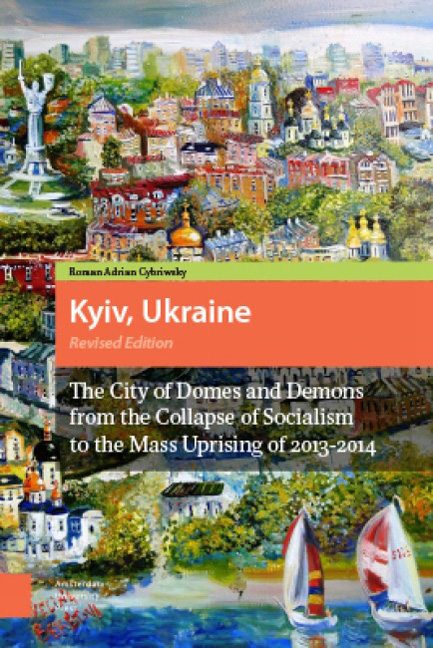 Kyiv, Ukraine
Kyiv, Ukraine Book contents
- Frontmatter
- Dedication
- Contents
- List of Illustrations and Tables
- A Note about Transliteration
- Preface and Acknowledgements
- 1 Far from Heaven
- 2 The Missing Museum of the History of the City of Kyiv
- 3 Sketches from the Capital
- 4 Soviet Ways, Post-Soviet Days
- 5 Historical Memory
- 6 The Center of Kyiv
- 7 A Geography of Privilege and Pretension
- 8 Landscapes of Struggle
- 9 “Suburbia”
- 10 Seamy Stories
- 11 The Defenders of Kyiv
- 12 Reflections
- Postscript
- References
- References
11 - The Defenders of Kyiv
Published online by Cambridge University Press: 10 December 2020
- Frontmatter
- Dedication
- Contents
- List of Illustrations and Tables
- A Note about Transliteration
- Preface and Acknowledgements
- 1 Far from Heaven
- 2 The Missing Museum of the History of the City of Kyiv
- 3 Sketches from the Capital
- 4 Soviet Ways, Post-Soviet Days
- 5 Historical Memory
- 6 The Center of Kyiv
- 7 A Geography of Privilege and Pretension
- 8 Landscapes of Struggle
- 9 “Suburbia”
- 10 Seamy Stories
- 11 The Defenders of Kyiv
- 12 Reflections
- Postscript
- References
- References
Summary
Hero City
The title of this chapter and “Hero City” are terms that are not to be taken lightly, because in history the city has faced the worst of demons and many heroes have sacrificed their lives to defend it. The time of World War II is indelibly etched most strongly in the narrative of Kyiv, as the suffering at the hands of Nazi aggressors was unprecedented, and the defenders who fought against them in the “Great Patriotic War,” as the struggle is known in the Soviet/post-Soviet sphere, are remembered forever with reverence and thanks (recall Figure 5.2). These heroes encircled the city with rings of defenses and held strong for seven weeks before the Nazis eventually took over Kyiv, were deliberately starved during German occupation, and then fought valiantly to retake the city on November 6, 1943. Hundreds of thousands of citizens gave their lives in the fight for just this one city, earning Kyiv the Soviet designation as “Hero City.” There are great monuments in Kyiv to these heroes that are much beloved, most especially the Museum of the Great Patriotic War that is capped by the dramatic 62-meter-tall stainless steel statue of Batkivshchyna Maty (Mother of the Fatherland) (Chapter 5). Other memorials are Park Slavy (Park of Glory) with its obelisk honoring the heroes of the Second World War and eternal flame to the Unknown Soldier; another tall obelisk on Prospekt Peremohy (Victory Avenue) that honors Kyiv as a Hero City; and various Soviet tanks on pedestals throughout the city and statues of generals, soldiers, and sharpshooters. Still more remembrance is via street names (e.g., Prospekt Peremohy; Prospekt Heroiv Stalingrada [Heroes of Stalingrad Avenue] in Obolon), names of subway stations (e.g., Heoriv Dnipra [Heroes of the Dnipro]), and annual holidays, parades on Khreshchatyk, and staged events in Independence Square (e.g., November 6 is the day for honoring the 1943 liberation of Kyiv). We see aging heroes on the street sometimes, men and some women, proudly wearing their medals. Their honorable service may have been in the defense of Kyiv or it may have been elsewhere in the war; regardless, other citizens offer smiles and sometimes nod or a bow of appreciation.
- Type
- Chapter
- Information
- Kyiv, UkraineThe City of Domes and Demons from the Collapse of Socialism to the Mass Uprising of 2013–2014, pp. 291 - 318Publisher: Amsterdam University PressPrint publication year: 2014
